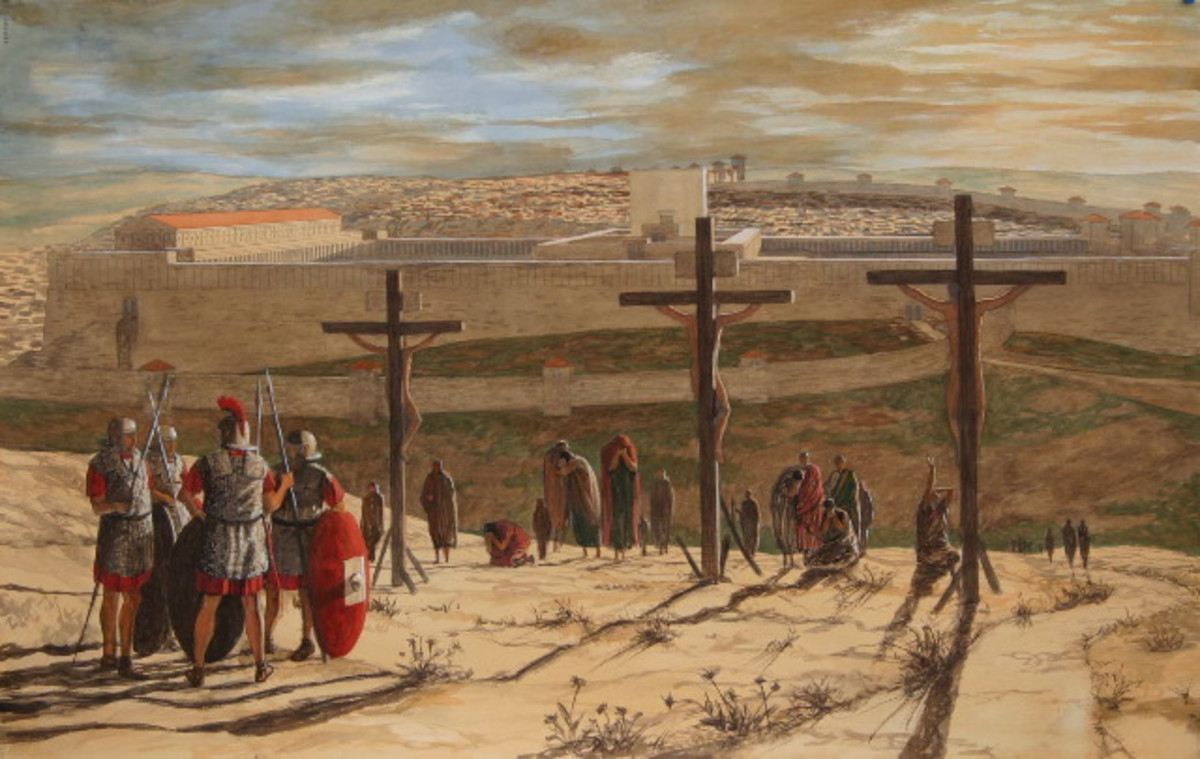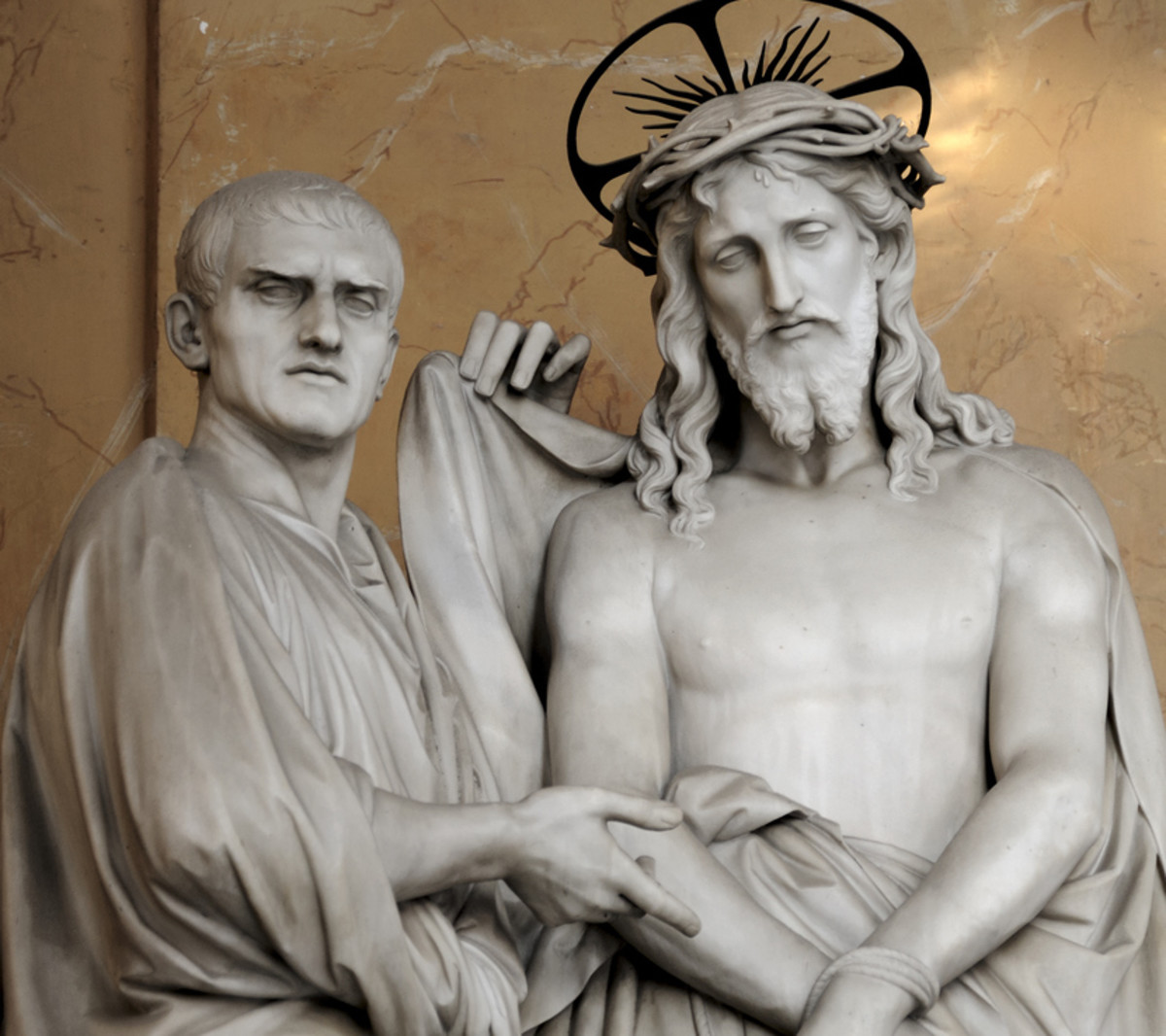Bible: What Does Mark 15 Tell Us About Jesus' Trial Before Pilate, His Crucifixion, and His Burial?
Jesus' Trial Before Pilate
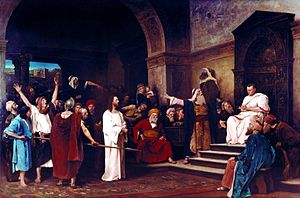
Using the term “immediately” once again, Mark shows how quickly all of the various branches of the Jewish government consulted to deliver Jesus up to the Roman authority (v. 1).
Matthew calls their meeting a plot to put Him to death, a sentence that they expected Pontius Pilate, the governor, to carry out for them (27:1-2).
Before picking up with Pilate's interrogation of Jesus (27:11-14), the first gospel writer inserts the Jews’ dealings with Judas (27:3-10).
Mark, on the other hand, completely omits any mention of the traitor’s demise and concerns himself with the trial (vv. 2-5).
Except for slightly different questions, Mark’s account accords with Matthew’s (v. 4).
"Behold, the Man"
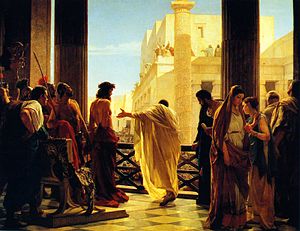
Barabbas
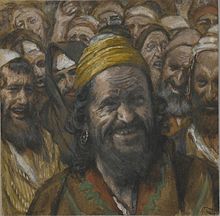
Jesus, The King of the Jews
An examination of the two texts handling the case of Barabbas again reveals engaging variances:
(1) Mark notes that the Romans had chained Barabbas with fellow murderous rebels (v. 7); Matthew merely designates him “a notorious prisoner” (27:16);
(2) Completely absent from Matthew, but found in Mark, is the raucous crowd’s request for Pilate to fulfill his customary release (v. 8);
(3) Mark’s Pilate refers only to Jesus, and labels Him as “the King of Jews” (v. 9); Matthew’s governor includes both Barabbas and “Jesus who is called Christ” in his query (27:17);
(4) Mark altogether passes over the little vignette featuring Pilate and his wife (27:19);
(5) Mark again uses the title “King of the Jews” (v. 12), something Matthew replaces with “who is called Christ” (27:22);
(6) Matthew’s Pilate asks the crowd an additional time for their choice of prisoner (27:17, 21);
(7) The governor seems actively pursuing Jesus’ release in Matthew (“saw that he could not prevail at all”) [27:24]; in Mark, he is presented as one who wanted to “gratify the crowd” (v. 15);
(8) Mark omits Pilate’s washing of his hands (27:24) and the Jews’ ignominious declaration of bloodguiltiness (27:25).
Simon of Cyrene
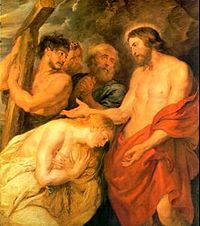
In the scene of the Roman military’s mockery of the Lord, Mark presents Jesus as wearing purple (v. 17); Matthew mentions not only what led to His being dressed in this way (“they stripped Him”), but also that they “put a scarlet robe on Him” (27:28).
They force Him to hold a reed (a humiliating substitute for a scepter) [cf. Mt. 27:29), and later strike His head with it (v. 19a).
Mark has these soldiers continue their “worship” after their mock salute and disdainful abuse (v. 19b).
Peter provides knowledge for Mark to use regarding the parentage of Simon of Cyrene, the man forced to bear Christ’s cross to Golgotha (v. 21).
[Cyrene, a port in N. Africa, had a Jewish community (Ryrie, New Testament Study Bible, 99).]
However, he does not share with Mark that the lottery cast to confiscate Jesus’ robe fulfilled Scripture; Matthew includes this important point, however (v. 24; cf. Mt. 27:35; Ps. 22:18).
[One must again keep in mind Mark’s readership—Gentiles—would not have knowledge of Hebrew Scripture.]
The Crucifixion

Jesus' Supposed Savior
view quiz statisticsMark notes that the Romans crucified Jesus at the third hour (9 a.m.) and that the inscription over His head read “THE KING OF THE JEWS,” (vv. 25-26), not “THIS IS JESUS THE KING OF THE JEWS (27:37).
[Although verse 28—a quotation from prophetic Scripture (Is. 53:12)—does not appear in many manuscripts, it is interesting that the citation should occur in Mark, but not in Matthew.]
Matthew reports that “those who passed by” repeat to Jesus His claim of deity (27:40), but Mark leaves that data out (v. 30).
The former also notes the Jewish leaders’ mockery as a conditional clause (if the “if” is genuine) [27:42], whereas the latter presents it as an imperative (“Let the Christ, the King of Israel, descend . . .”) [v. 32].
Finally, Mark’s gospel understandably does not contain another Hebrew Scripture that the Jews tried to use against Jesus at this time (cf. Mt. 27:43; cf. Ps. 22:8).
Except for a few short, though significant changes in word choice, the two gospels examined thus far report the same data in the next six verses (vv. 33-38; cf. 27:45-51a).
Instead of recording the remarks of “the rest,” “Let Him alone; let us see if Elijah will come to save Him” (27:49), Mark seems to indicate that the “someone” who gives Jesus a drink says, “Let Him alone; let us see if Elijah will come to take Him down” (v. 36).
In addition, Mark records Jesus “breathing His last” (v. 37), whereas Matthew writes that He “yielded up His spirit” (27:50).
Earthquake
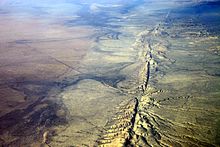
Joseph of Arimathea

Matthew 27:51b-53 contains an account of several events occurring after Jesus’ death and after His resurrection—an earthquake (v. 51b), a resurrection of saints (v. 52), an appearance of those saints in Jerusalem (v. 53)—that Mark does not have.
The two gospels also offer different reasons why the centurion guarding Jesus made a profession of faith in the Lord’s deity.
Matthew suggests that the “earthquake and the things that had happened” motivated him (27:54); Mark points to Jesus’ cry and His last breath (v. 39).
Finally, Mark mentions that Salome attended the Lord’s crucifixion (v. 40), while Matthew says that “the mother of Zebedee’s sons” also looked on (27:56).
The accounts in the first two gospels of Jesus’ burial differ in interesting ways.
In the more satisfying rendition both rhetorically and instructionally, Mark indicates that Friday evening brought “the Preparation Day, that is the day before the Sabbath” (v. 42).
He also provides a better portrayal of Joseph of Arimathea’s faith than does Matthew (v. 43). Compare the accounts below:
Mark
| Matthew
|
|---|---|
A prominent council member, who was himself waiting for the kingdom of God, coming and taking courage
| Who himself had also become a disciple of Jesus
|
Mark’s additional statements about Pilate (vv. 44-45) also flavor the passage far better than does Matthew’s bland reporting (27:58).
Mark
| Matthew
|
|---|---|
Pilate marveled that He was already dead; and summoning the centurion, he asked him if He had been dead for some time. So when he found out from the centurion, he granted the body to Joseph.
| This man went to Pilate and asked for the body of Jesus. Then Pilate commanded the body to be given to him.
|
Little else of substantial difference remains in the rest of the chapter (vv. 46-47).
© 2014 glynch1


